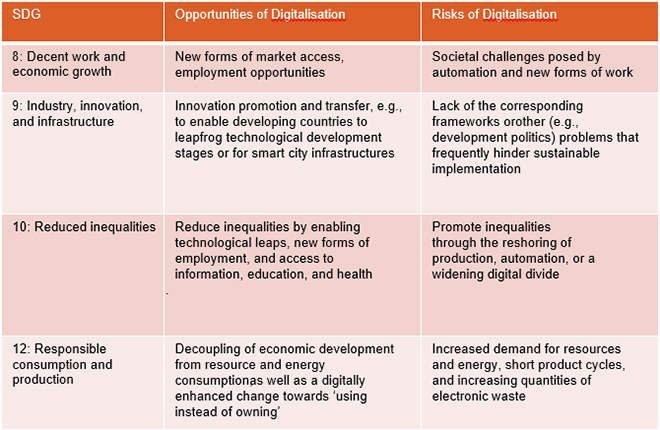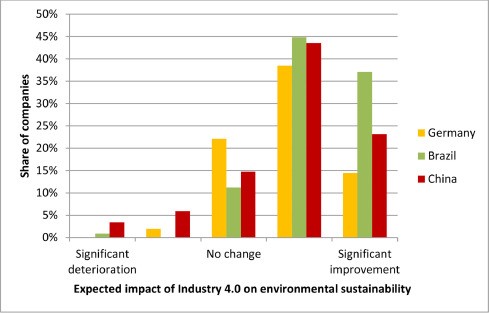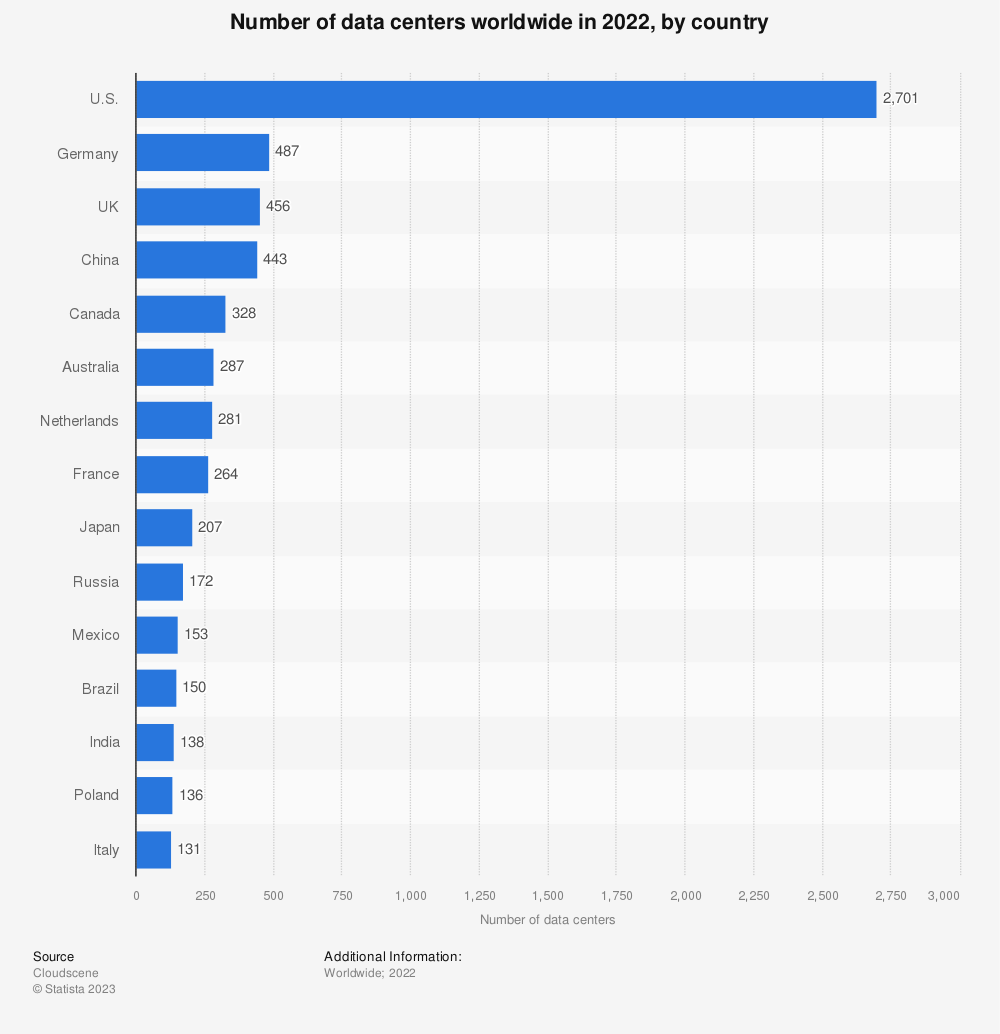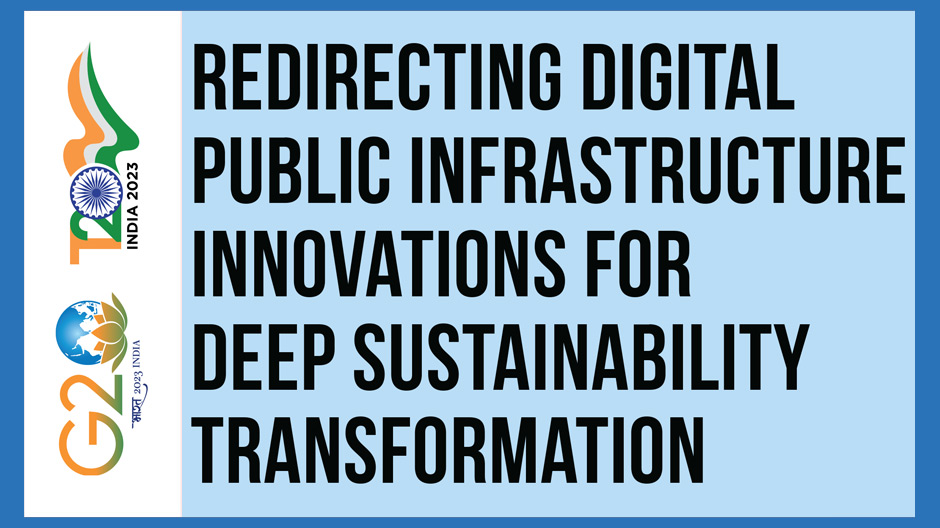Task Force 2: Our Common Digital Future: Affordable, Accessible, and Inclusive Digital Public Infrastructure
In recent years, the concept of digital public infrastructure (DPI) has gained significant attention. However, many DPI initiatives disregard the implications of digitalisation for sustainability. Numerous global environmental agreements have been enacted by the G20 countries towards a sustainable global future. Regrettably, the two realms of policymaking are often disconnected, failing to systematically address how digital transformation can contribute to sustainable development. This Policy Brief aims to address this gap by outlining key pathways that can guide G20 policymakers in utilising DPIs to achieve the Sustainable Development Goals (SDGs). It also provides a systemic perspective on greening supply chains, enhancing smart city applications, scaling up corporate environmental practices within big tech companies, and establishing a global governance architecture for DPI. By fostering these pathways, policymakers can advance a more interconnected and transformative approach to sustainable digital transformation.
1. The Challenge
Digital public infrastructure (DPI) is a transformative process in social infrastructure provision that utilises ubiquitous digital technologies to connect economic spaces and actors. By collecting, analysing, and intelligently utilising data for real-time problem solving, DPI and its progressive applications play a pivotal role in achieving faster and more inclusive economic growth. Moreover, DPI serves as a crucial driver for deep sustainability transformation aligning with international environmental agreements like the Paris Climate Accord, the United Nations 2030 Sustainable Development Agenda, and the Montreal Protocol.[1] These agreements present significant opportunities to enhance the quality of life of billions of people.
The COVID-19 crisis has also demonstrated the positive impact of DPI through innovative developments such as telemedicine, online education, and teleworking. While digital transformation, social equity, and sustainable development are prioritised by the G20 countries, there remains a need for increased effort, leverage, and utilisation of DPI to effectively deliver on the Sustainable Development Goals (SDGs).[2]
A comprehensive review of the connections between digitalisation and the SDGs has been undertaken.[3] However, it is crucial to recognise that digital technologies are continually evolving and can result in unintended consequences, such as increased energy consumption from unsustainable use of digital devices, which can undermine climate mitigation efforts. Therefore, it is essential to measure the impacts of DPI on sustainable development.[4]
Appendix A highlights that the relationship between digitalisation and SDGs varies across economic, sectoral, and planetary levels. Currently, there is uncertainty regarding blind policy spots and means of maximising the opportunities provided by DPI to achieve the SDGs.[5] Identifying these opportunities and challenges requires proactive action from industries supported by the corporate environmental strategies of technology leaders. Moreover, it necessitates a careful integration of new and emerging DPIs within a dynamic new global governance architecture.
2. The G20’s Role
The G20 leaders have acknowledged the importance of the digital economy and have taken action to harness its benefits. These efforts include initiatives such as the G20 Digital Economy Working Group (DEWG), which aims to facilitate collaboration amongst the G20 members in promoting meaningful digital connectivity, building digital skills, and enhancing DPI.[6] The Declaration of the G20 Osaka Summit emphasised the need for policy cooperation to fully unleash the potential of the digital economy, with a particular focus on data governance to enable cross-border data flows.[7] In recent times, both the Italian and Indonesian presidencies have identified digital transformation as a means to support post-pandemic economic recovery. The shift towards the digital realm in the global economy has opened new avenues for sustainable development in the G20 member countries.
Building on the efforts of previous presidencies, the Indian presidency has identified four key themes related to DPI. These include sharing experiences on the implementation of digital identity in different countries, exchanging cybersecurity solutions for small businesses along supply chains, leveraging geospatial technologies for infrastructure development, and utilising digital public infrastructure to advance the achievement of SDGs. Under the Indonesian presidency, the launch of the G20 global digital innovation alliance highlighted the importance of designing future digital technologies and public infrastructure with sustainability in mind. The alliance aims to enhance economic resilience, foster social equity, and promote sustainable development.
3. Recommendations to the G20
The sustainability potentials of DPI can be realised through a strategic examination of opportunities and risks. Figure 1 illustrates the four policy pathways through which DPI can contribute to achieving comprehensive sustainability, along with the drivers and benefits associated with each pathway.
Figure 1: Pathways for DPI as a Platform Solution for Sustainability Challenges

Source: Authors’ own
Based on emerging experiences, there are four key pathways through which DPI can serve as a platform for addressing the sustainability challenges associated with reducing the environmental footprint and inclusivity in development. These pathways include the supply chain approach, smart cities, corporate environmental management, and global governance architecture. It is anticipated that these pathways will have a profound impact on shaping the next generation of DPIs and will be essential prerequisites for achieving significant sustainability transformations by 2030.
a. Greening global trade and supply chains through DPI platforms
Value chains of manufactured goods in Asia have experienced a significant rise in CO2 emissions, embodied in the region’s gross exports, which increased from 1,516 million tonnes in 1995 to over 4,505 million tonnes in 2019.[8] Recent research has demonstrated the positive impact of digitalisation on environmental sustainability along the supply chains and through trade and investment channels, particularly in countries like China, Germany, and Brazil.[9] Industry 4.0 technologies have shown moderate to significant improvements in resource efficiency along supply chains (Appendix 2). Despite the enormous potential of digitalisation, global trade processes remain predominantly paper-based.[10] Implementing electronic documents and e-transactions can enhance trade logistics efficiency, significantly reduce trade costs, and bring environmental benefits. Paperless trade, when coupled with green logistics, has the potential to eliminate between 9 and 23 million tonnes of CO2 emissions annually at the global level.[11]
Southeast Asia’s food value chains exemplify the benefits of an integrated approach to green logistics and climate-smart agriculture practices. Digital technologies such as computer-aided fertiliser application and the use of drones have enabled farmers and agro-entrepreneurs to increase labour productivity, climate resilience, and competitiveness. Precision agriculture practices have led to higher crop yields while reducing resource consumption. Additionally, the Internet of Things (IoT) and artificial intelligence (AI)-driven food waste reduction systems can generate substantial cost savings.[12]
Implementing the WTO Trade Facilitation Agreement (TFA) should be a key priority for the G20. The TFA can streamline border procedures, enhance transparency, and improve the movement, release, and clearance of goods. Integrated transport management systems and digital logistics platforms can contribute to improved trade flows and reduced congestion at borders.
Digital platforms for trade finance can also support small businesses in their decarbonisation efforts. Fintech innovations, including the IoT, AI, and blockchain, can enhance transparency along the supply chain, reduce due diligence costs, and facilitate regulatory compliance. The key actions can include establishing an enabling legal framework for digital transactions, including the harmonisation and adoption of digital standards for electronic trade documents and legal recognition of key digital documents for trade; creating a technically conducive environment for businesses, including the availability of digital identity, electronic payment systems, and robust data security; removing legal and technical barriers to paperless trade; facilitating cross-border data flows and policy information exchange; and promoting international guidance and good practices. Further, G20 supply chain-related industrial and trade policies that aim to combine DPI and decarbonisation should be guided by the SDGs.
b. Advancing smart cities: Responsible integration of DPI applications for SDG advancement
By 2050, cities are expected to accommodate approximately 55 percent of the global population and contribute to 85 percent of the global economic output.[13] However, they will also account for 70 percent of CO2 emissions and around 60 percent of resource consumption.[14] Most cities in the G20 economies face significant challenges in meeting the triple objectives of economic productivity, social inclusivity, and environmental sustainability. In the context of SDGs, ensuring access to essential public services is the primary focus, followed by promoting sustainable use of energy, waste, and water services, as well as effective management of environmental issues and disasters.
Smart city approaches have emerged as effective solutions to address sustainability challenges by leveraging DPI applications and harnessing large volumes of data. For instance, transit-related analytics using data on ridership, traffic density, and road safety can increase the usage of public transit services, improve job accessibility, and contribute to carbon emissions reduction.[15] Additionally, cities can deploy sensors to collect real-time data on air quality and electricity consumption in buildings.[16] In Salem, India, a cloud-based DPI system has successfully reduced energy usage in the city’s LED-based lighting system, enhancing efficiency, cost-effectiveness, and safety for pedestrians and vehicles.[17],[18] Moreover, IoT devices connected to smart metres in Southeast Asian megacities have helped households save up to 7 percent on their energy consumptions.[19]
Advancements in DPI provide cities with new opportunities to achieve SDGs through environmental monitoring and protection. At its core, DPI enables unprecedented connectivity, communication, and collaboration. Integrated smart system platforms can integrate existing data and services while employing analytical processes to accurately assess city conditions and provide a range of services tailored to specific needs. Takamatsu City in Japan utilises smart city analytics, where real-time disaster data, such as cyclones and flooding, obtained through the DPI system enable policy recommendations. Scaling up such systems at the national level can help tackle more complex and numerous issues. Furthermore, the digital twin concept of smart cities, implemented in Singapore and Amravati, India, offers a groundbreaking approach to monitoring the effectiveness and efficiency of public infrastructure investments aligned with the SDGs. Digital twins, constructed using sensors and other DPI applications, create virtual replicas of cities, enabling the monitoring of buildings, utilities, and vehicle movement. In Singapore, digital twins have contributed to a 25 percent reduction in municipal solid waste, facilitating improved resource allocation.[20]
c. Advancing corporate environmental practices of big tech companies for deep decarbonisation
To drive sustainable transformation, the integration of DPIs must prioritise two crucial objectives: decarbonisation and dematerialisation. Currently, a handful of big tech companies globally shape and design digital products. To ensure that digital technologies serve deep sustainability transformation, it is essential to align the intrinsic motivation and business models of these tech giants towards carbon neutrality.
Several innovative corporate environmental practices exist. For instance, Nokia, one of the leading mobile phone manufacturers, adopts environment-friendly components, uses recyclable materials, and aims to source 100 percent of its electricity needs from renewable energy sources by 2030.[21],[22] Nokia also promotes the idea of carbon neutrality as a corporate philosophy amongst its employees.[23] In its offices in China, the United Kingdom, and the United States, mobile offices (desks and meeting rooms) are encouraged, reducing office space fees by around 30 percent and subsequently lowering energy demands.23 Employee travel is discouraged when teleconferencing can suffice. Nokia’s digital devices come with applications that encourage lifestyle changes, such as walking, recycling, and purchasing carbon offsets. Furthermore, the company has developed software to alert users when their phones are fully charged, promoting energy conservation by unplugging them.23
Big tech companies can also drive the transition to a net zero economy through product and process innovations. For example, Intel, a US-based manufacturer of computer microprocessors, established an ecotechnology group in 2010 dedicated to sustainable manufacturing and product use. This interdisciplinary team continuously explores pathways to improve Intel’s carbon footprint and offers carbon credits to customers.[24]
However, it is important to address potential setbacks such as increased carbon emissions in other areas. Data centres owned by big tech companies consume substantial amounts of energy for network operations and cooling. As of June 2022, there were over 6,300 data centres in the G20 countries, with the Asia Pacific region experiencing the fastest growth in hyper-scale data centres.[25] These data centres account for approximately 1–3 percent of global electricity demand and 0.3 percent of global carbon emissions.[26] To combat this, Google has demonstrated that using AI tools can reduce data centre energy usage by 40 percent.[27] Google has also undertaken efforts to decarbonise its data centres by starting to work towards 24/7 carbon-free energy.[28] Additionally, it formed the Green Grid initiative, a consortium of big tech companies aiming to improve energy efficiency in data centres.[29] Google and Intel partnered to establish the Climate Savers Computer Initiative, which promotes environment-friendly manufacturing of personal computers and digital gadgets.[30] This initiative boasts tech company members committed to manufacturing more energy-efficient computers and purchasing eco-friendly hardware.30
Big tech companies actively strive to offset their carbon footprints. Fujitsu, a Japanese computer maker, and Infosys, an India-based software giant, have both achieved carbon neutrality ahead of schedule. These companies conduct annual environmental audits and receive monthly reports on electricity consumption from their various locations, enabling them to shift to low-carbon energy sources needed to maintain carbon neutrality.[31] Additionally, in the post-COVID-19 era, many big tech companies in the information technology and data processing sectors offer flexible schedules and work-from-home options to their employees, promoting climate co-benefits, amongst other reasons.
Another commitment made by big tech companies to SDGs is the adoption of triple-bottom corporate social responsibility (CSR) reporting. Tech enterprises like Toshiba, Amazon, and Wipro not only report their financial gains but also disclose their environmental, social, and governance (ESG) performance through audited reports.
The G20 governments and standard-setting organisations can collaborate to scale up these corporate environmental strategies and transform them into sectoral standards. They can harmonise these practices and establish guidelines for corporations to disclose their carbon efficiency using standardised reporting frameworks for annual investments. They can enhance the impact of corporate environmental practices and accelerate the transition towards a sustainable future through such collaborations.
d. Developing a global governance architecture for deepened sustainability in DPI
Deepening sustainability and promoting social equity through DPI requires a common global governance architecture. To ensure effectiveness, ease of use, and deep sustainability, a coordinated approach is necessary. This approach should facilitate economic growth, build trust between solution providers and users, improve data access and transparency, and establish robust data governance mechanisms. While progress has been made by some G20 countries, an overall coordinated approach to sustainability, data access, equity, and data governance is still lacking.
Appendix 4 provides an overview of the functional characteristics of DPI and sustainability challenges in the G20 countries. It highlights the complex task of establishing beneficial links between digital technology adoption, climate risk management, equitable development, environmental policies, and SDG achievement. The varying statuses and ongoing digital transformation processes necessitate coordinated global efforts. World Bank’s Gov Tech Maturity Index,[32] which covers 198 countries and assesses four areas, indicates that high-income economies are leading in DPI practices. While some Southeast Asian, South Asian, and African countries demonstrate good DPI practices, most low-income countries have not fully embraced the agenda. Globally, DPI and sustainability are yet to be fully embraced by most low-income countries.
Furthermore, the accelerated use of resource-intensive DPI technologies like blockchain and AI raises concerns about increased energy consumption and unforeseen environmental consequences. Rebound effects, where increased efficiency leads to higher overall resource consumption, need to be monitored and evaluated.[33] However, there is still limited understanding of these effects, which are often externalised and invisible to most DPI users in high-income countries. These impacts are often absent from the pricing structure of digital technologies or transferred to low-income countries.
To address these challenges, a robust common digital governance system should be established, focusing on four key factors: (i) digital government for SDGs; (ii) citizen-centric DPI development; (iii) data-driven and open innovation in corporate practices; and (iv) a global DPI network for sustainability standardisation. Such a framework would enhance citizens’ wellbeing and quality of life. Many G20 countries are already taking steps to create dedicated institutions and regulations in these policy areas.
An example of a recent joint effort is the Digital Data as subject of Transdisciplinary Processes (DiDaT) project in Germany, which developed guidelines through transdisciplinary discourses involving representatives from science, digital solution providers, and users.[34] This pioneering initiative allows for the co-conception of standards, regulations, and guiding principles, enabling developing countries to mediate amongst different approaches from Europe, the US, and China. However, the flexibility in DPI service design may lead to path dependencies that are challenging to reverse once costly investments are made. Therefore, active participation from civil society and the creation of productive DPI are crucial. Public policies should support capacity-building initiatives, promote knowledge sharing, and establish platforms to share best practices and lessons learned.
Engagement of all stakeholders, including big tech companies, small businesses, and consumer groups, in a mutual co-design process is vital for establishing national-level governance structures aligned with SDG norms. Without a coordinated approach, fragmented initiatives from various sectors can lead to sub-optimal sustainability actions. The regulatory sandbox approach can offer a controlled environment for innovative DPI governance approaches within a G20 common framework, taking into consideration each country’s context, both direct and indirect benefits embodied by the SDGs and Nationally Determined Contributions (NDCs).
Drawing from experiences across countries with varying capabilities, the four pathways for developing a green digital supply chain strategy, enhancing smart cities, implementing comprehensive environmental strategies, and innovative sandbox-based governance framework can be pursued by the G20 Digital Economy Working Group (DEWG) and the Climate and Sustainability Working Group (CSWG) to advance DPIs for deep sustainability outcomes.
The authors would like to thank Mr. Athavan Anbumozhi, University of British Columbia; Ms. Nava Bharati Manickam, Manipal Institute of Technology; and Ms. Ayu Pratiwi Muyasyaroh, Economic Research Institute for ASEAN and East Asia, for their research support and contributions to this Policy Brief.
Appendix 1: The Promise and Perils of the Digitalisation of Public Infrastructure

Appendix 2: Implications of Digitalisation on Environmental Performance

Source: Beier et al. (2022)
Appendix 3: Growth of Data Centres

Source: Cloudscene (2022)
Appendix 4: Differing Status of DPI Adoption and Progress in Sustainability Efforts in G20 Countries

Attribution: Venkatachalam Anbumozhi et al., “Redirecting Digital Public Infrastructure Innovations for Deep Sustainability Transformation,” T20 Policy Brief, June 2023.
Endnotes
[1] Venkatachalam Anbumozhi, Kaliappa Kalirajan, and Fukunari Kimura, eds., Sustainable Development Goals and Pandemic Planning: Role of Efficiency Based Regional Approaches (Singapore: Springer Singapore, 2022).
[2] Venkatachalam Anbumozhi et al., “Accelerating ‘Just’ Transition: Implementation and Financing Pathways for the G7 and G20,” accessed June 20, 2023.
[3] Jiaqi Xu, Shengxiang She, and Wen Liu, “Role of Digitalization in Environment, Social and Governance, and Sustainability: Review based Study for Implications,” Front.Psychol 13.
[4] Martina Fromhold-Eisebith et al., “Our Common Digital Future,” (Berlin: WBGU – German Advisory Council on Global Change, 2019).
[5] George Ingram, John W. McArthur, and Priya Vora, “How Can Digital Public Technologies Accelerate Progress on the Sustainable Development Goals?,” Brookings, last modified May 25, 2022.
[6] “2022 G20 DEWG Priority Issues Aim for Sustainable Digital Ecosystem,” Antara Indonesian News Agency, last modified July 8, 2022.
[7] “G20 Osaka Summit (Summary of Outcome),” Overview, Ministry of Foreign Affairs of Japan (MOFA), last modified June 29, 2019.
[8] “Trade Facilitation and Paperless Trade,” UN Global Survey on Digital and Sustainable Trade Facilitation, last accessed June 20, 2019.
[9] Grischa Beier et al., “Implications of Industry 4.0 on Industrial Employment: A Comparative Survey from Brazilian, Chinese and German Practitioners,” Technology in Society 70 (2022).
[10] Steven Beck, “Can the Pandemic Help End the Paper Chase that is Hobbling International Trade?,” last modified February 16, 2021.
[11] Yann Duval, Celine Bacrot, and Simon Hardy, “Quantifying the Environmental Benefits from Paperless Trade Facilitation,” United Nations Conference on Trade and Development (UNCTAD), last modified November 2, 2021.
[12] Yamaji Eiji, “Assessing the Competitive Advantage of Public Policy Support for Supply Chain Resilience,” in Supply Chain Resilience; Reducing Vulnerabilities to Economic Shocks, Financial Crises and Natural Disasters, eds. Venkatachalam Anbumozhi, Fukunari Kimura, and Shandre Mugan Thangavelu (Singapore: Springer Singapore, 2020), 217-38.
[13] “Inclusive Cities: Development News, Research, and Data,” The World Bank, accessed June 21, 2023.
[14] “Smart Cities, Circular Economy and Urban Sustainability,” Frontiers, accessed June 27, 2023.
[15] William Pao, “How Public Transit Can Benefit from Data Analytics?,” Asmag, last modified November 21, 2019.
[16] Prashant Kumar et al., “Indoor Air Quality and Energy Management through Real-Time Sensing in Commercial Buildings,” Energy and Buildings 111 (January 2016): 145-153.
[17] International Energy Agency (IEA), “India Energy Outlook,” February 2021.
[18] Christian Alonso et al., “Stacking Up the Benefits: Lessons from India’s Digital Journey,” Working Paper, IMF, 2023.
[19] Jonathan Woetzel et al., “Smart Cities in Southeast Asia,” McKinsey Global Institute, July 5, 2018.
[20] Amaia Porteirio, “Digital Twins and Urban Planning: How to use Replicas to Building the Cities of Tomorrow,” last modified November 30, 2019.
[21] “Our ESG Strategy,” Nokia, accessed June 27, 2023.
[22] Emanuela Kerencheva, “Nokia Targets 100% Renewable Energy Use by 2025,” ESG Today, last modified November 12, 2021.
[23] “Environment,” Nokia, accessed June 27, 2023.
[24] “Innovating Our Way to a Better World,” Intel, accessed June 27, 2023.
[25] Erik Masanet et al., “Recalibrating Global Data Center Energy-Use Estimates,” Science 367, no. 6481 (February 2020): 984-986.
[26] International Energy Agency, 2022 Centres and Data Transmission Networks (Paris).
[27] Rich Evans and Jim Gao, “DeepMind AI Reduces Energy Used for Cooling Google Data Centers by 40%,” Google, last modified July 20, 2016.
[28] Sundar Pichai, “Our Third Decade of Climate Action: Realising a Carbon-Free Future,” Google, accessed September 14, 2020.
[29] Catherine Clifford, “How Google Plans to use 100% Carbon-Free Energy in Its Data Centers by 2030,” CNBC, last modified April 13, 2022.
[30] Bill Weihl, “Climate Savers Computing Initiative,” Google, last modified June 12, 2007.
[31] The UN Environment Finance Initiative (UNEP FI), “Energy Efficiency,” accessed June 5, 2023.
[32] Cem Dener et al., “GovTech Maturity Index: The State of Public Sector Digital Transformation,” World Bank, September 15, 2015.
[33] Tilman Santarius, “Digitalization, Efficiency, and the Rebound Effect,” Resilience, last modified February 22, 2017.
[34] “Digital Data as Subject of Transdisciplinary Processes (DiDaT),” RIFS POSTDAM, accessed June 27, 2023.
[35] “Digital Adoption Index,” World Bank, accessed June 21, 2023.
[36] Jeffrey Sachs et al., The Decade of Action for the Sustainable Development Goals: Sustainable Development Report 2021 (Cambridge: Cambridge University Press, 2021).
[37] David Eckstein, Vera Künzel, and Laura Schäfer, “Global Climate Risk Index 2021: Who Suffers Most from Extreme Weather Events? Weather-Related Loss Events in 2019 and 2000–2019,” Germanwatch, last modified January 25, 2021.
[38] Martin J. Wolf et al., “Environmental Performance Index,” Yale Center for Environmental Law & Policy, accessed June 27, 2023.
[39] “Gini Coefficient by Country,” Wisevoter, accessed June 21, 2023.





